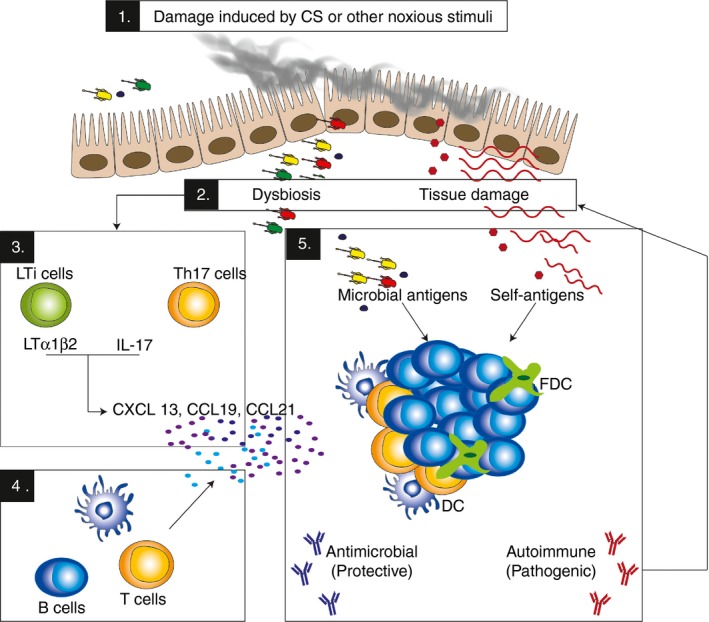Figure 2.

New insights into tertiary lymphoid follicles (TLFs) formation and function in chronic obstructive pulmonary disease. Exposure to noxious stimuli such as cigarette smoke (CS) [1] can lead to tissue damage and consequently the release of self‐antigens and dysbiosis of the pulmonary microbiome [2]. Antigenic stimuli provided by these, can activate lymphoid tissue inducer cells or interleukin‐17 (IL‐17) ‐producing cells which may in turn stimulate the production of chemokines such as CXCL13, CCL21 and CCL19 [3], which recruit T and B cells into the lungs and initiate lymphoid neogenesis [4]. Within the TLFs that are thus formed, microbial and self‐antigens may be presented leading concomitant generation of local responses that may be both protective and detrimental simultaneously [5].
